The flashy new movie “Matrix” has a hidden message, woven in amidst all the Hollywood bells and whistles that have become quite cliché these days, including the gunfights where people are dying with rock-and-roll or techno music blasting in the background.
The heroes of the movie are actually the ones doing most of the killings. Although it approaches bankruptcy in the spiritual sense for being so ridden with glamorized violence, it is certainly worth mentioning due to its overwhelming, direct penetration into the subconscious metaphor of the imminent Ascension event.
Perhaps these movies are all working off of each other, in a way. It could be Hollywood’s own way of continuing to synopsize its own philosophical musings on the human condition.
This movie has clearly synthesized many other themes that have been presented over the years, in a moderately new and very slick, space-age way. Central to the theme of the movie is the concept of our own destruction of ourselves on a planetary scale.
In this sense, we have all participated equally in what has occurred, and we all need to participate equally in stopping it, namely by being of service to others.
The movie does not adequately explain or demonstrate what really needs to be done to pull us out of this phase of our existence, with one sole exception. The last scene demonstrates that it is the love of the female character and her declaration of love for the hero that brings him back from the dead in an Ascended form.
Other than that, the problems are clearly shown, with the predominant number of “solutions” inexorably leading back to the same answer — guns, Kung-fu style fights and widespread killing.
The movie takes advantage of a wide variety of popular themes in modern culture, as well as a whole host of subconscious archetypal metaphors.
The most intensive popular theme in the movie was borrowed from books such as William Gibson’s Neuromancer, where all of society is collectively “jacked in” to some sort of gigantic, holographic dream world, similar to virtual reality.
This dream world is referred to in this movie as “The Matrix.” Our own present existence here in 1999 is shown to be nothing more than a holographic illusion that we are all collectively participating in, with a reality that is much more corrupt and horrifying.
The “evil reality” is that the real year is actually not 1999, but closer to 2199. The story goes that humankind created full artificial intelligence sometime in the mid-21st century, and that it quickly replicated itself and grew more and more powerful.
The machine ended up declaring war on its creators, namely all of humanity, and its means of powering itself was through solar energy. So, the inhabitants of Earth decided to destroy the atmosphere and permanently darken the skies in order to stop the solar-powered machines.
This actually did not stop them at all, as the machines ended up capturing all of humanity to use their living bodies as batteries. The minds of the trapped human “batteries” were then replicated back into the matrix of Earth 1999, where they continued to exist thinking that everything was perfectly normal.
So, what we then have is every living person actually being stored in a gigantic, dark and sinister “hive” within their own pod of slimy, pinkish liquid, fitted with a great number of hoses in their stark-white skin.
This part of the movie, perhaps more than any other, is disgusting, and is certainly capable of putting some very negative thoughtforms into the viewer’s subconscious that could well lead to horrifying nightmares.
The images in this section were reminiscent of “Hellraiser” without any of the blood, the “Alien” series, “Invasion of the Body Snatchers,” “Blade Runner” to a certain degree and a far more grotesque version of Star Trek’s half-human half-robotic creatures known as the Borg.
Here is one example where we can see the authors either consciously or subconsciously struggling with the “whys” of the current alien abduction scenario, involving the growth and propagation of half-human, half-alien fetuses by the “Greys,” through the unwilling cooperation of human participants.
This extraterrestrial component is only strengthened by the fact that the lead character has no hair on his head and no eyebrows when he emerges from the liquid chamber. This shaved face also evokes memories of the Hitler-style villain who emerges in the Pink Floyd movie “The Wall.”
The violent, sickening metaphor of humanity bursting from the pods seems to be related to the inner, personal revelation of “slavery” and deadness that so many of us feel. When we actually awaken to the horrors of what we ourselves have created, we are indeed covered with the slime and disgust of our own conceptions.
Many people’s awakenings do indeed come with violence and even revulsion, when they finally realize what they have been doing to themselves. There is also the metaphor of the chrysalis or pupa, where the larval form eventually bursts forth as the butterfly.
This is a representation of the collective consciousness of humanity’s own “birth” into the fourth dimension, so soon to be upon us now, and the violence that we create as we resist it.
In Matrix, there are only a very small number of human beings who were able to escape from these pods and formulate some aspect of a resistance to the Borg-like machines that took over the planet Earth.
They have trained themselves to be able to consciously manipulate the physical conditions in the Matrix, enabling them to do remarkable, super-human things within that world. Unfortunately, almost all of these special skills, with the exception of the ability to “leap tall buildings in a single bound,” are exclusively utilized to make them more adept at fighting and killing.
Again, it is very unfortunate that we have to get an interesting science-fiction type of message as this with so much disharmony and violence associated with it. Conveying that message is certainly not going to solve any of the problems in society that the movie adequately portrays.
The ones who the heroes kill are either regular human police officers, army guys in the Matrix who resist them, or a unique breed of creature referred to as the “Agents.”
The “Agents” look like your standard secret government, men-in-black type of people, with expensive suits, dark slicked-back hair, alien-style black sunglasses and an earphone in the right ear with a visible cord that goes down the back of the neck.
These “Agents” are actually the manifestations of the artificially intelligent machine, and they are capable of the same extraordinary feats that the heroes show us. They are also capable of entering into any human being in the Matrix and transforming that being into one of themselves.
The way for any of the heroes to get out of the Matrix is through answering a telephone call, given by one of their crew in 2199 who stays back to help them escape.
Answering that telephone call allows them to warp back into their bodies, which are actually seated in their portable spacecraft in 2199, “jacked in” to the matrix through these sockets that are built into the back of their heads.
We can clearly see the metaphor of the Internet coming out through this — of an identity and a life of our own that travels through the phone lines.
Right away, many of the metaphors that the movie is drawing upon are clearly visible. Everything that the movie indicates as being a future projection is actually what is occurring right now, in a metaphorical sense.
The machine taking over the planet is obviously a representation of the Secret Government and the overall organization of the military / political / corporate hierarchy that seems to be in complete control at this point.
The “agents” are identical to the stereotyped image of modern secret government agents, seen in so many movies these days. Plus, the concept of being enslaved to this machine is actually a quite valid representation of the economic bondage that the vast majority of human beings undergo in today’s society, being forced to work like crazy for minimum pay just to stay alive.
The movie touches upon the anger that many of us are feeling towards this shadowy force that we cannot see. The “Agents” become the physical, human character that we can then put a label on and say, “This is the face of the secret government.”
Aside from the endless gunfights, there are at least five or six scenes where these “Agents” are involved in violent fistfights, and take incredible beatings – an obvious way for the viewer to release inner aggression at this massive force that seems to be so unchallenged in the world today.
The only humans who are not enslaved to this “machine” are said to live in a land called “Zion,” or the name for the Promised Land most commonly popularized by Rastafarians such as Bob Marley and Peter Tosh.
The most interesting theme in the movie is the recurrence of the “Reluctant Messiah” archetype. The lead character is said to be “The One,” the only living person who is capable of completely controlling the Matrix by conscious thought, outmaneuvering the Agents.
In a very loose sense, we have a direct parallel to the story of the Messiah, or the returned Christ – one who is capable of manipulating the physical world as easily as if it were a dream, having complete control over what happens and how it happens.
There is a hint about this at the very beginning of the movie, before anything else happens, when the lead character is visited by friends.
After doing what appears to be a very underhanded deal for pirated software worth $2000, the purchaser tells the star, “Thank you, man, you’re my own personal Jesus Christ.” We missed this bit of foreshadowing the first time we saw the movie.
So, we have a character who is supposed to single-handedly “save the world.” But the lead character doubts himself, and his doubts are apparently confirmed by the “Oracle,” a motherly black woman who is said to be the highest prophet in all the land.
This “Oracle” was the one who prophesied his return in the first place. When he goes to her, she can tell that he isn’t mentally ready to believe who he is yet. She shows him the sign over her kitchen door, which says “Know Thyself” in a foreign language.
She tells him that when you know who you are, no one needs to tell you – it is an innate knowing that comes over you. In order to trick him into being more motivated for his mission, she gives voice to his deepest fears, telling him that he was not the One and it had to be someone else, or maybe in his next life.
Obviously, this “Reluctant Messiah” archetype is about ourselves. Each of us are innately aware of our true potentials in our deeper being, but we are so addicted to our convenient habit patterns that we fail to break the pattern.
We all tend to feel that we are not good enough, that we cannot “save the world,” that we have failed in some way. That is the essential nature of fear and self-doubt that plagues us. When we can begin awakening to what our true potential really is, we might just decide to start making positive changes in our lives.
There are so many areas where we “know” we should try to break our patterns, but we just never summon up the willpower to do it.
We “know” we should record our dreams but we rarely ever do.
We “know” we should eat a healthy diet but we continue to indulge in sugar, dairy, white flour, meat and grease.
We “know” we should stop being codependent and seek our strength from within, and yet we stay in the same horrible, life-draining relationships time and time again.
We often seem to be completely unwilling to step forward and begin making the difficult changes that will lead to our own growth; in short, we are lazy.
The presentation of the Oracle was another example of a recurring archetype in our society. Before we see this Oracle, it is built up as being something or someone that is completely incredible in vastness and scope.
When we actually see the Oracle, who is supposed to be “very, very old,” we are surprised to see a late middle-aged black woman who bakes cookies and reads palms. This is the stereotypical “grand-mammy” archetype in modern society that specifically associates black women with having grandiose psychic abilities.
It is easily seen in the myriad advertisements for psychic hotlines, which are almost inevitably fronted by a female African-American woman who assures you that you will get the guidance you are really seeking, and that only her line has the “real” psychics who know what is what.
Dream researcher Joe Mason has stated that for most white people, the African-American characters in the dreams represent the mysterious, mystical parts of ourselves and our environment, including angelic entities, extraterrestrials and the like — the deep Unknown.
When you combine that aspect with the notion of the feminine gender, the archetype is strengthened even more. It is the rampant abuses of the masculine archetype run wild in our present society that so desperately call for a return to the feminine archetype, that which we have cast aside in our logic-based empirical systems of scientific inquiry and “search and destroy” colonization techniques.
Getting back to the point, the lead character Neo, played by the popular actor Keanu Reeves, is said to be “The One” who will single-handedly save the whole world. Reeves’ own mentor and powerful ally is called Morpheus, and is played by Laurence Fishburne.
Throughout the movie, we can see Reeves growing into his role as The One, but it is not until the very end where he fully assumes his own capabilities. Before he fully and completely awakened to who and what he was, he was forced to dodge the bullets fired by the Agents, by slowing time down to enough of a crawl that he could get out of their trajectories.
At the end, Neo stops the bullets completely, through nothing more than the force of his own willpower. And then, he does a very remarkable thing; he suddenly flies forward as a shadowy, cylinder-shaped burst of energy and enters directly into the body of the main character of the Agent.
After your standard cliché of the stretchy, soon-to-explode human being, white cracks appear all over the Agent’s body and he suddenly explodes. What is left remaining in his place is the form of Neo, now glowing head to toe in brilliant white light. The other two Agents run for dear life in fear of his new abilities.
It is this portion of the movie that falls most closely in line with the subconscious metaphor of Ascension. The role played by the Agents could be seen to symbolize the parts of ourselves that seek to indulge in materiality and consumerism, willingly allowing ourselves to be enslaved by a massive, shadowy force.
The Ascension only happened once the lead character fully entered into his own Ego self, his own fears, and symbolically crucified them, bringing about their destruction and / or purification.
Furthermore, the lead character was resurrected from the dead to become the One only when the leading female character declared her unconditional love for him — following the classic archetype of the return of Jesus Christ after crucifixion.
In this case, the form of the crucifixion metaphor was Reeves’ death by gunshot wounds. It was the love that brought him back to life.
We can see the same archetype emerging in the Walt Disney movie Sleeping Beauty, where it is the love of Sleeping Beauty that brings Prince Charming back from the dead. The Lion King also uses this subconscious metaphor of the crucified and ascended Christ.
Again, this is an archetype, and so movie producers and storywriters may well write it into their plots without ever fully consciously realizing what the archetype actually is, or from where it originates. It is the nature of creativity to be laced with authentic psychic guidance, and so we can indeed see glimmers of the truth coming out in many different forms of imaginative fantasy such as this.
However, in this case it appears that the Wachowski Brothers did this knowingly, based on the telltale line at the beginning of the movie — “You’re my own personal Jesus Christ, man.”
The main point of this article is to suggest that each person who Ascends will individually have the experience of being “The One,” “The Messiah” or “The Savior.”
This is due to the fact that the saga of Christ was demonstrated to us to show the path that we all must go through.
As it says in the Cayce readings, Christ formed the “pattern” that we must all follow at the time of the closing of our present Solar Cycle. As the time of this Great Solar Cycle is now nearly complete, there will be millions and millions of us having the personal experience of Ascending, of being our own reluctant Messiah and Savior.
We only run into trouble when we ascribe such a unique feat only to ourselves or to one external figure. Again, this is the pattern that all of us are meant to follow. Therefore, we will all have the personal experience of being the Messiah, and that experience starts today, right now, in this moment as we read these words.
It is a constantly, rapidly evolving process that will move as quickly as we choose to allow it to move. What are we choosing – love or fear? Think about that one for a minute.
This movie also utilized another Christ metaphor, namely that of Judas the betrayer. In the Christ saga, Judas was the apostle who betrayed Christ to the Romans, which led to His willing crucifixion.
He allowed himself to be crucified because God, referred to in the Bible as “The Father,” told Him that He had to go through with it. Despite His wishes to the contrary, saying “Father, let this cup pass from me,” He was required to do it anyway.
In “Matrix” we have a character who betrays this mission of salvation to the Machine, and brings about the death of several of the crewmembers before he himself is extinguished.
Again, we see the urgent Christ metaphors emerging in today’s creative work; the same stories, dressed in distorted modern clothing. The reason why the Star Wars trilogy sold so well is that George Lucas had actually studied these archetypes, through Joseph Campbell’s epic work The Hero with a Thousand Faces, and designed the movie to present those archetypes quite directly.
Thus, they touch on the pure, unadulterated script of our group mind, the stories that we will all still remember even if we were stuck in a cave by ourselves all our lives.
Finally, the names of the characters reveal quite a bit. The lead female character’s name is Trinity, and the lead male character’s name is Neo. Most people are familiar with the fact that the Trinity concept in Christianity refers to the Three Faces of God, or the archetypes of the Father, Mother and androgynous “son.”
So, the name of the female character shows the clear connection of the feminine archetype to the Trinity, which was distorted by Western Christianity into the patriarchal terms of Father, Son and Holy Ghost. And indeed, this attractive woman can do all of the same “tricks” that the men can do in the movie.
Then, when we factor in the lead male character’s name, the puzzle assembles itself. The name “Neo” means “New.” So, if we combine their two names together, we get “New Trinity,” or possibly what could be referred to in the Bible as “The New Heaven and New Earth,” also referred to as “The New Jerusalem.”
This is the Ascended or fourth-dimensional Earth that we are all moving towards. Since Neo represents “The One,” what we are really being shown is this “New” being that we are all becoming as we move towards Ascension.
Finally, the character name “Morpheus” contains the word “morph,” or change, meaning “He who changes,” or “He who transforms.” Therefore, a quick combination of the three main names would be “He who transforms [humanity into the] New Trinity.”
We know that this “He” is actually each one of us, when we personally step into our role as Messiah, or Christed Being. So, we can see that the movie does present us with clues to what is really occurring in our present time, cleverly buried and filtered through the often spiritually-starved lens of modern Hollywood.
The only crucial disclaimer that must be made here is that self-serving actions such as violent fighting and killing will practically guarantee that an entity will not be vibrationally suitable for Ascension.
And yet, Neo becomes a ruthless, efficient and devastating killer after his first, initial realization of his possibly being “The One,” when he donned ET-style sunglasses and went in to rescue Morpheus, who was captured by the Agents.
The author of this article did not shout out aggressive cheers when Reeves began blowing all the cops away as “The One.” It was a sad, pathetic statement that almost completely obliterated the deeper message of the movie, made worse by the cacophony of whoops and hollers in the movie theater.
So, in the long line of Hollywood sci-fi tradition, we have a movie where the metaphor of Ascension sneaks out, albeit in a grossly distorted form.
What we see from all of this is that the world that we think we know is but a hologram or a projection, and when we break through that illusion we are capable of Christlike abilities and Christlike compassion.
Now, the only step for Hollywood to make is to get rid of the ridiculous, glamorized violence that is causing more and more people to shut down and withdraw themselves from the media in all of its forms.
And it is indeed quite accurate to say that shutting off the sex and violence-soaked TV and refusing to allow these thoughtforms to enter into your mind on a daily basis is indeed an extremely wise, if not vital step to meeting the vibrational criteria for Ascension.
However, if we are willing to regretfully pore through the foul layers of carbon in this particular movie, keeping the real truth at the front of our minds, we may indeed find the diamond that will inspire us with the reality of our own imminent Messianism and Ascension.
Heck, I liked it.
Last Updated ( Sunday, 15 March 2009 )


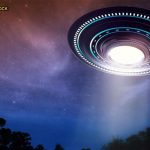
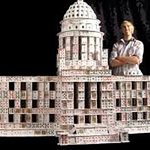
![DECLAS: Social Media Nukes An Entire Generation… But Why? [Free Ebook!]](https://divinecosmos.com/wp-content/uploads/2019/06/DECLAS_TT-150x150.jpg)
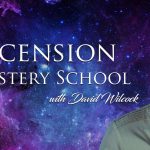

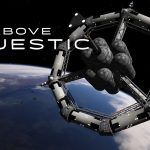
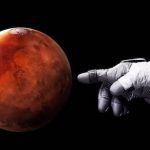

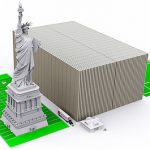


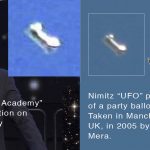
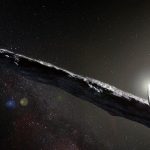

THere are parallels to Christianity for Real…because it is the only Thing that Truly IS REAL. There is no ‘distortion’ in the Western ‘Christianity”…NEVER was there a MOTHER FATHER and androgynous “Son”. To say so is to call Jesus a liar. Joseph Campbell is a very dangerous person to get involved with, and if you’ve been believing what this Neo-Unbeliever is saying, you’ve been duped…